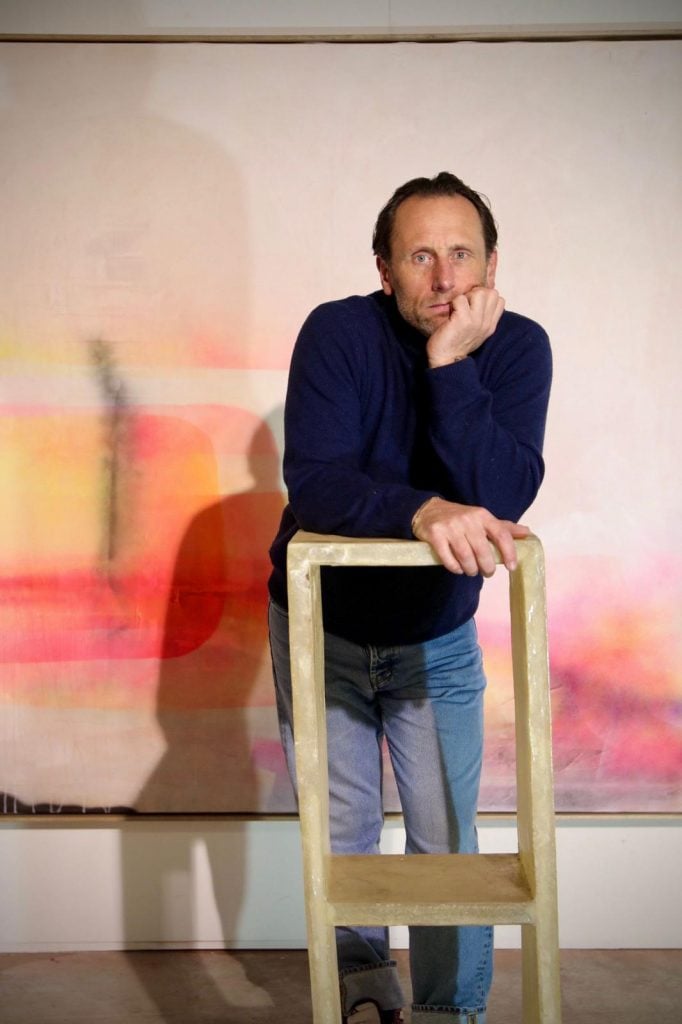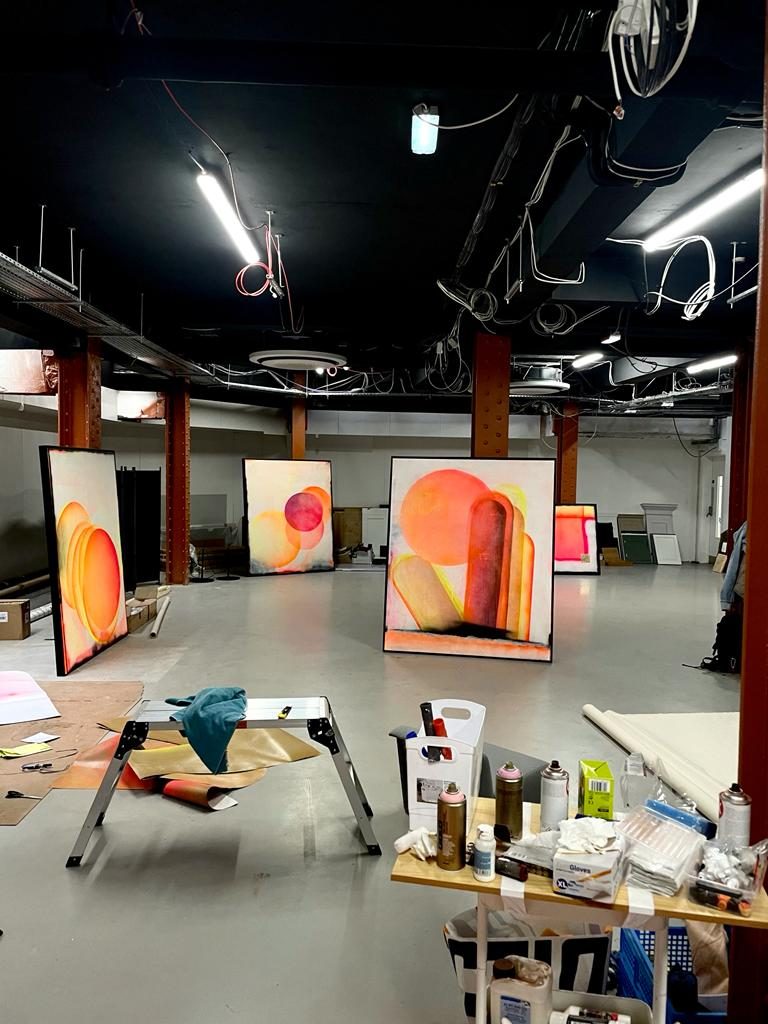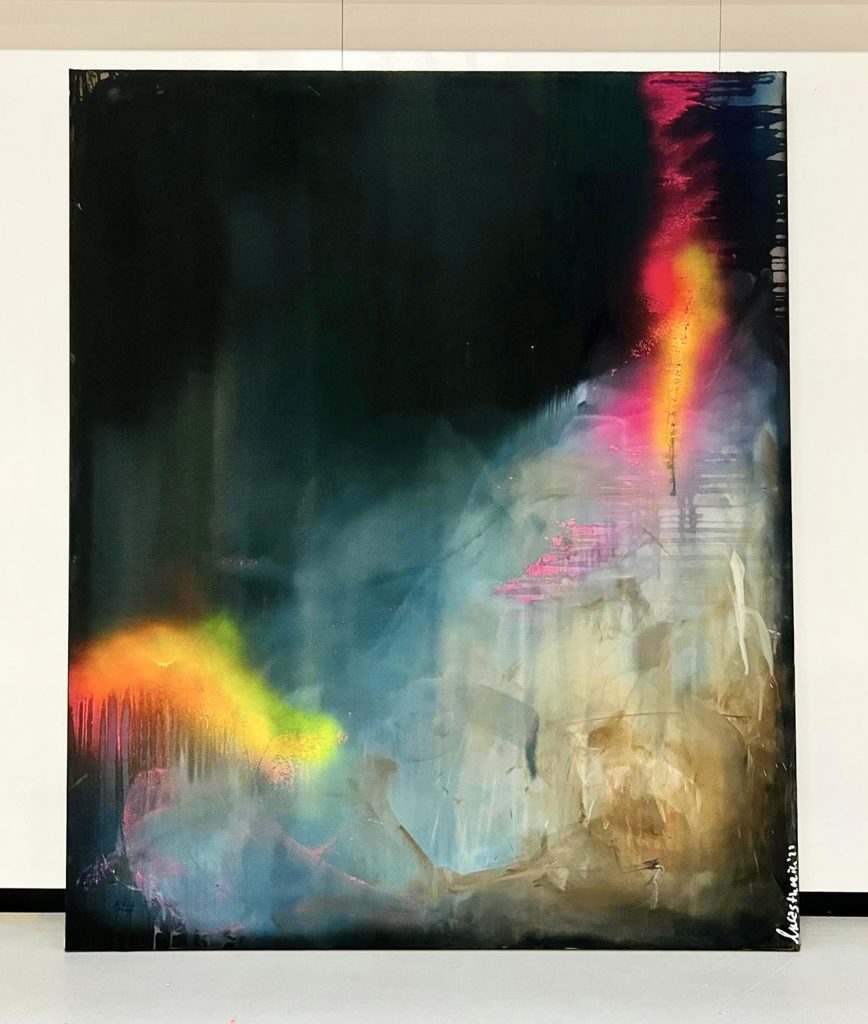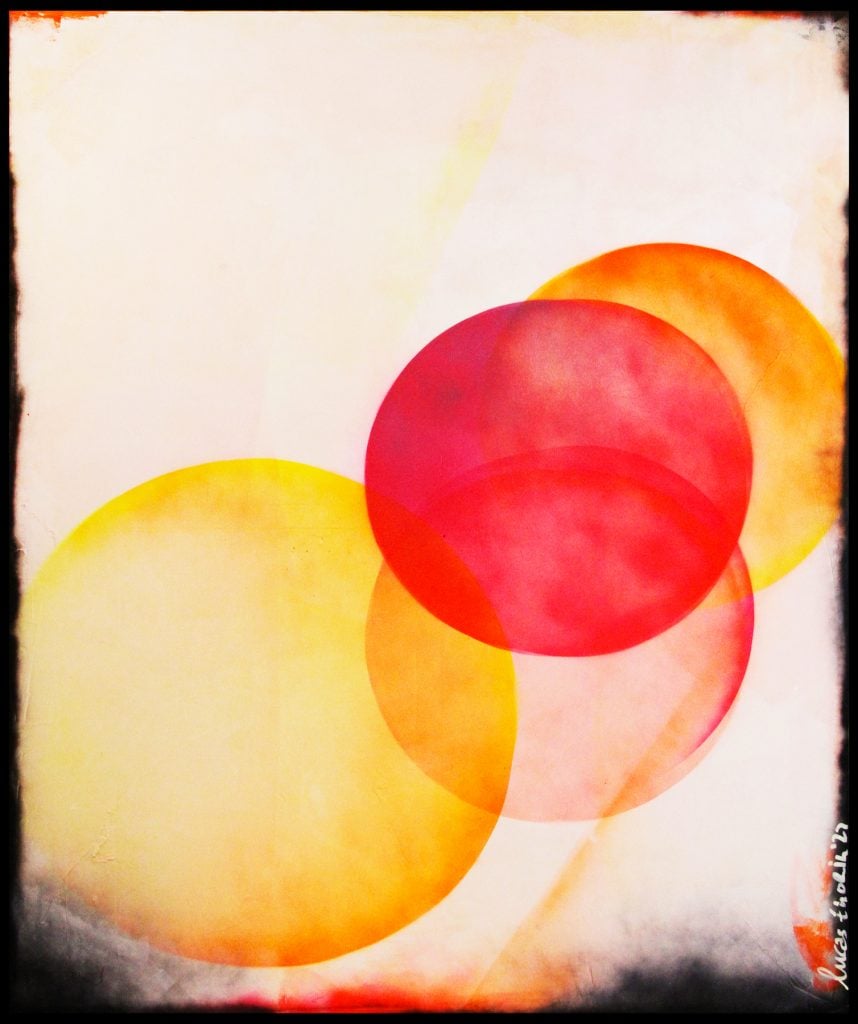Gallery Network
7 Questions for Dutch Self-Taught Artist Lucas Thorik on How His Past Lives as a Surfer and DJ Inform His Paintings
The artist recently completed a residency at London gallery The Arx.

The artist recently completed a residency at London gallery The Arx.

Artnet Gallery Network

Dutch artist Lucas Thorik creates eye-catching large-scale paintings dominated by hot pinks, acid yellows, and bright oranges. Though certainly paint on canvas, his abstract images are marked by pools and pulls of color that mimic the effects of film light leaks.
A self-taught artist, Thorik has followed a circuitous path, having variously immersed himself in the surf scene, becoming a DJ at the height of techno, and working building design fair booths. The artist has said he’s taken his artistic inspirations less from art history than from music, design, and philosophy.
Thorik’s artistic process involves a subtle layering of elements that the artist considers reflective of life’s various incarnations. He applies white plaster onto his canvases, creating a thick impasto, onto which he spray paints neon hues in a fine mist. Thorik’s works often employ stencils, a technique he first utilized while making surf t-shirts in the 1980s. More recently, Thorik has placed his canvases directly onto the floor, at times working across several canvases at once.

Courtesy of the Arx.
Recently the artist participated in a residency at the London gallery the Arx. Located in the gallery’s basement, the studio space spans over 15,000 sq ft and offered Thorik an expansive space to create on a new scale. Thorik’s works are currently on view at the Arx in “Behind the Canvas,” a group show that also includes work by the gallery’s latest artist-in-residence, Raine Storey.
Recently, we caught up with Thorik to discuss his unconventional career path and to see what he took away from the residency.
How did you first learn about the Arx residency and why did you decide to apply?
It all started with the power of social media. The Arx’s curatorial team discovered my profile on Instagram, which was then followed by a chat about the possibility of joining the gallery as a represented artist. The team then offered me the opportunity to take part in the gallery’s residency program in its basement. I jumped at the idea, and a couple weeks later drove all of my canvases and paints to London. It gave me a completely new perspective on my work being in a different country and creating in a new environment.
I read that you’re a self-taught artist. Can you tell us a little bit about your career trajectory?
As an early school dropout and child of a family of artists, the Royal Academy of Fine Arts wasn’t really an option for me! I felt at an early age that I wanted to do things differently and, to be honest, I couldn’t wait to leave school, it was always too formulaic for me. From a semi-professional surfer, I went into being a DJ, designer, and a vintage design collector/dealer. These experiences made me realize that what I really enjoy doing is creating and painting. I was always close to my parents and would hear them discuss artists and different techniques. I’m sure I picked this up by osmosis, but I’ve always been a very intuitive painter.
How would you describe your process?
I never have a plan before starting a new work and I react to the canvas spontaneously. My main aim is to find balance in all of my works—vast plains of white spaces against hard, neon colors. Building up my paintings with layer upon layer of semi-transparent layers, which superficially appear to be white space, upon closer inspection they reveal the intricacies and stories in life.

Lucas Thorik, 48 (2022). Courtesy of the Arx.
What did you learn at the residency? What were your major takeaways?
As I normally have a very small attention span in my own studio—I’m always getting distracted by the smallest things—I wanted to try another approach and paint as much as possible in nine days. It taught me to work on multiple paintings at the same time, using different techniques. The pressure created some really intense and dramatic pieces.
I’ve read that you try to avoid art historical references in your work—what would you say are your inspirations, then, and how do they manifest?
I want to be authentic to myself. I’m easily influenced by others and take on too much information. I often analyze things over and over, so it sometimes works better not to see too many things.

Lucas Thorik, 39. Courtesy of the Arx.
What works do you have in the exhibition “Behind the Canvas”?
I approached the exhibition as a small retrospective of the different paintings that I’ve made over my career as an artist.
What does “Behind the Canvas” mean to you and how does your work address the idea?
The exhibition aims to show the varied approaches artists take in their work, whether that’s using different mediums or interesting techniques, and I know the curator wanted to delve deeper into the psychological processes involved. I resonate with this idea because my work is very reflective of my emotions and experiences and I mirror these with my techniques, such as with my layered plaster, referencing life’s ups and downs and the pops of color I use to nod to the happy moments.
Lucas Thorik’s works are currently on view in “Behind the Canvas” at the Arx, London, through June 14, 2022.